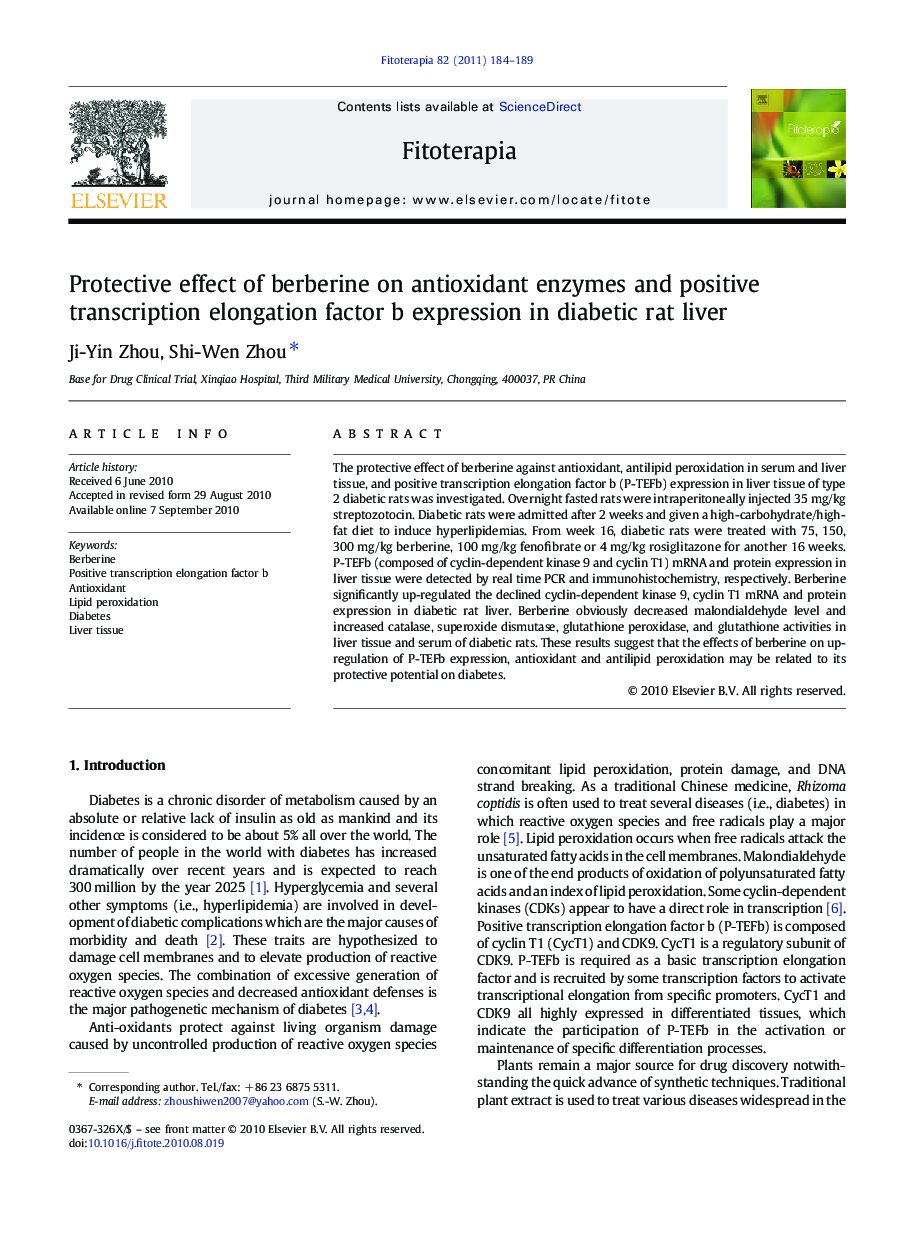| Article ID | Journal | Published Year | Pages | File Type |
|---|---|---|---|---|
| 2539288 | Fitoterapia | 2011 | 6 Pages |
The protective effect of berberine against antioxidant, antilipid peroxidation in serum and liver tissue, and positive transcription elongation factor b (P-TEFb) expression in liver tissue of type 2 diabetic rats was investigated. Overnight fasted rats were intraperitoneally injected 35 mg/kg streptozotocin. Diabetic rats were admitted after 2 weeks and given a high-carbohydrate/high-fat diet to induce hyperlipidemias. From week 16, diabetic rats were treated with 75, 150, 300 mg/kg berberine, 100 mg/kg fenofibrate or 4 mg/kg rosiglitazone for another 16 weeks. P-TEFb (composed of cyclin-dependent kinase 9 and cyclin T1) mRNA and protein expression in liver tissue were detected by real time PCR and immunohistochemistry, respectively. Berberine significantly up-regulated the declined cyclin-dependent kinase 9, cyclin T1 mRNA and protein expression in diabetic rat liver. Berberine obviously decreased malondialdehyde level and increased catalase, superoxide dismutase, glutathione peroxidase, and glutathione activities in liver tissue and serum of diabetic rats. These results suggest that the effects of berberine on up-regulation of P-TEFb expression, antioxidant and antilipid peroxidation may be related to its protective potential on diabetes.
Graphical AbstractBerberine significantly up-regulated the declined cyclin-dependent kinase 9, cyclin T1 mRNA and protein expression in diabetic rat liver. C, control rats; D, diabetic rats; LB, low-dose (75 mg/kg) berberine-treated diabetes; MB, middle-dose (150 mg/kg) berberine-treated diabetes; HB, high-dose (300 mg/kg) berberine-treated diabetes; F, fenofibrate-treated diabetes; R, rosiglitazone-treated diabetes.Figure optionsDownload full-size imageDownload as PowerPoint slide
